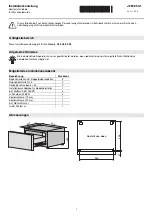
6/10/13 – 11
6
Climbing Using the Rope Wrench System
NOTICE: PRACTICE “LOW AND SLOW”
Practice all of the instructions in this section “low and
slow” before ever attempting anything at height,
regardless of experience or skill level.
Basic Operation of the Rope Wrench
The Rope Wrench has two “gears”, neutral and
engaged, as shown below.
Figure 6a. Neutral Gear
Figure 6b. Engaged Gear
Neutral Gear.
The climbing rope can pass freely
through the Rope Wrench.
Engaged Gear.
Due to downward loading on the tether
attachment point, the climbing rope is bent into an S
shape by the Wheel and Slic Pin. The climbing rope
may still pass through the Rope Wrench, but the
Slic Pin and Wheel apply friction that slows it down.
Ascending
WARNING: DO NOT USE AS ASCENDER
Do not attempt to hang on the Rope Wrench as you
would an ascender as this may inadvertently release
the friction hitch and can lead to serious injury or death.
The Rope Wrench is NOT an ascender and plays no
part in ascending. It must, however, be pulled up along
with the rest of the system as the climber ascends, in
order to keep the system clean and tidy. This can be
facilitated by attaching a harness with a chest
attachment point to the Tether Attachment Point of the
Rope Wrench or to the tether itself. This will help keep
slack out of the system as the climber ascends.
Ascend using any desired SRT method. Hand
ascenders, foot ascenders, foot loops, and the
footlocking method are all acceptable means of
engaging the rope. The sit-stand method helps keep
slack out of the system.
WARNING: UNDERSTAND SRT
The Rope Wrench must only be used by arborists who
have received training and have practical experience
with climbing using the Single Rope Technique (SRT).
Using the Rope Wrench without proper training and
experience with SRT can lead to serious injury or death.
Descending
DANGER: NOT FOR LIFE SUPPORT
The Rope Wrench is designed to act as a friction
control device. It is not a life support device. The
climber must always rely on the friction hitch as primary
life support. If the friction hitch does not engage, it
cannot be expected that the Rope Wrench will slow the
climber’s fall. Using the Rope Wrench as life support
will lead to serious injury or death.
Before Descending.
Ensure that the Rope Wrench has
begun to engage (refer to
Figure 6b.
) To do this,
move the Rope Wrench as far up the climbing rope
as possible, and while holding it there, gently
release the grip of the friction hitch so that the body
weight can be partially shifted from the climbing
rope to the tether, which should then begin to
engage the Rope Wrench.
Descent.
To descend, simply pull down gently on the
top of the friction hitch to release its grip on the
climbing rope. The friction from the engaged Rope
Wrench and partially engaged friction hitch will allow
the climber to descend at a smooth, controlled rate.
At no point during descent does the Rope Wrench
need to be touched.
DANGER: RAPID DESCENT HAZARD
Do not use the Rope Wrench to release the grip of the
friction hitch. This will lead to very rapid descent
resulting in serious injury or death.
CAUTION: DO NOT DESCEND TOO QUICKLY
Although the Rope Wrench is designed to act as a heat
sink during descent, the climber should not descend too
quickly, as doing so can still damage the friction hitch.
Halting Descent.
To stop descending, simply let go of
the friction hitch.
Engage





























